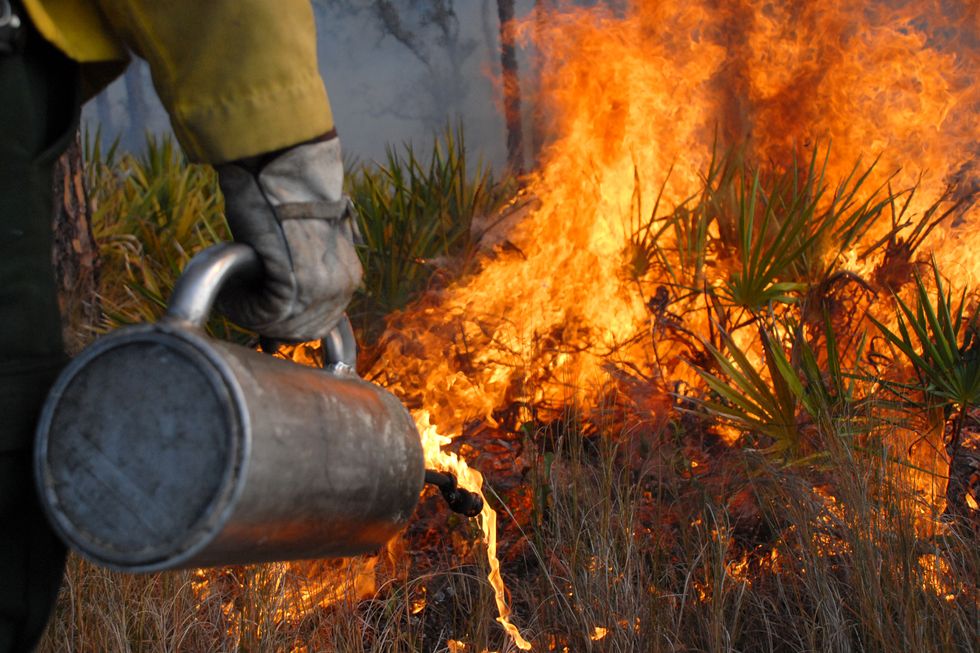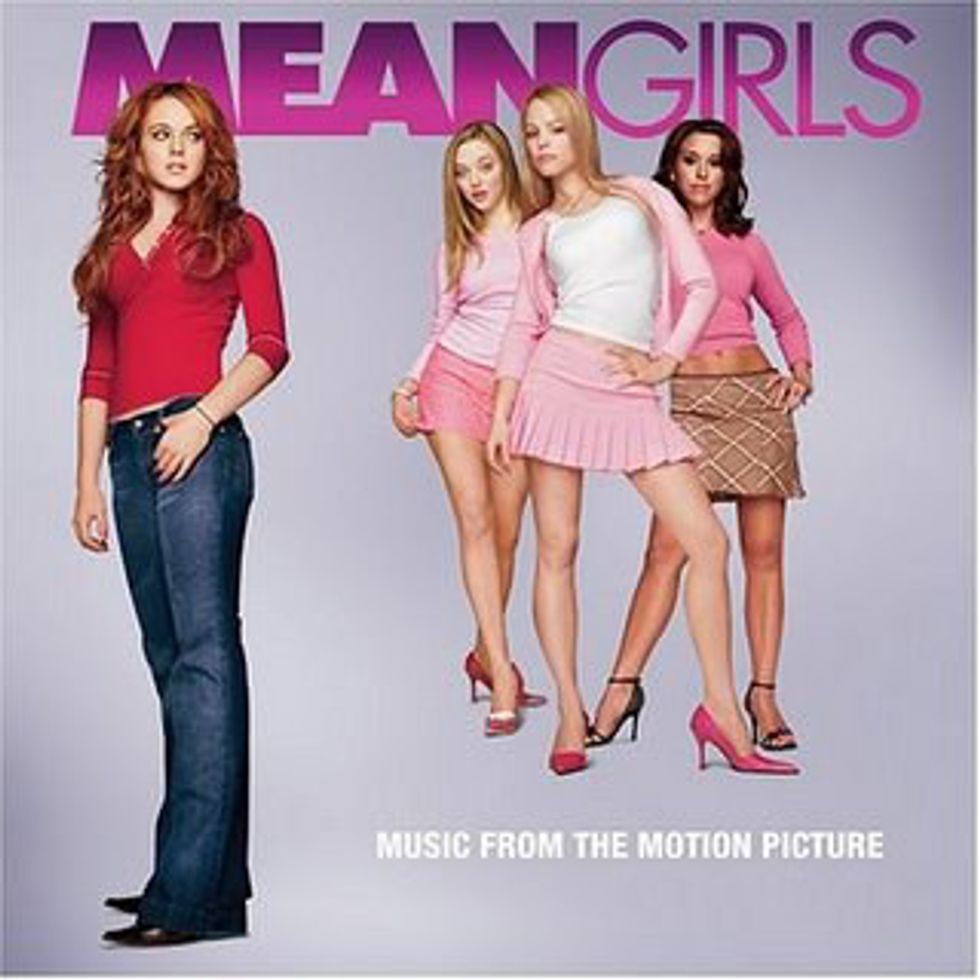Among my never-ending list of extra-curricular activities and a to-do list longer than the construction on I-40, one of my most cherished accomplishments was being voted into my local volunteer fire department back home. As a junior in high school, I began my probationary membership period with West End Volunteer Fire Department in Lawrenceburg, Tennessee.
Since then, I have undergone a variety of training in the field of emergency response and fire management. While cutting up cars with power tools and hydraulic equipment isn't a typical "Just Girly Thing," it became so for me. While much of my hands-on training and ability to respond to a call every time the tones dropped has been stifled since coming to college, my desire to continue serving as a volunteer firefighter has not.
Early on in my training, I became enthralled with wildland fire and the prospect of becoming a smokejumper or joining a hotshot team. I had previously responded to a handful of calls near the Natchez Trace Parkway in southern Middle Tennessee involving wildfires or grassfires close to the National Parkway area. I started to follow other female firefighters on social media, and regularly read blogs or followed posts from other "women on fire." Heck, I've even attempted to begin CrossFit training at TRECS in order to meet the physical demands that the job requires.
As excited and as hopeful as I was to immerse myself in this aspect of firefighting and emergency response, I began to see an overwhelming push from veterans in the Forest Service and similar agencies discouraging young women to step up to the plate and answer the call to join the fire service. I was shocked to find out that these women were pleading with younger generations, young women like me, to go as far away as possible from the fire life.
In early March, an article was circulated by Susan Marsh for Mountain Journal which detailed the struggle that women in the U.S. land management and wildlife agencies face in terms of gender equality. Marsh opens by describing the oft-talked about "Forest Family" within the Forest Service and follows up with a critical analysis of how that family is often one-sided.
"'Men Wanted' reads a 1905 recruitment poster advertising for forest ranger recruits. “A ranger must be able to take care of himself and his horses under very trying conditions; build trails and cabins; ride all day and all night; pack, shoot, and fight fire without losing his head. … It is not a job for those seeking health or light outdoor work… Invalids need not apply.” It was unnecessary to add that women need not apply. Who among the fairer sex would want to?"
Before the age of Equal Opportunity Employment, the idea of a woman undertaking such a masculine role was unheard of. Seen similarly within the National Park Service, the first women employees were officially hired in 1918. Prior to this, as with the Forest Service, women assisted their husbands and the camp community contributing to the "family" environment.
In an article from the NPS entitled "Breeches and Blouses," the story of the nation's first Rangerettes is detailed. Hired to fill vacancies left by men off to war in Europe, these Rangerettes were temporary workers fulfilled duties consisting of either checking in vehicles to the parks or performing "ranger services." Clare Marie Hodges, one of the original two of the Rangerette duo, was a grade school teacher who worked as a ranger for less than four months in 1918.
"It is not known what type of uniform, or identification, if any, that Wilson wore. There are, however, at least three photographs of Clare Hodges while on duty. From these she appears to have worn what was referred to at that time as "camping clothes." There are no pieces of regulation uniform evident, except for a badge and perhaps her hat.
In the early years, women found it very difficult to penetrate the male dominated National Park Service. Only a few foresighted people like Horace Marden Albright, then superintendent of Yellowstone, and Washington Bartlett "Dusty" Lewis, superintendent of Yosemite (who hired Hodges) gave women a chance to show that they could perform as well as a man."
Following 1918, the article goes on to describe a "trickle" of women hired in the nine-year span between 1920 and 1929. Five women in nine years. Five women in nine years serving only temporary positions. The only full-time, permanent positions offered to women classified them as "naturalists" performing "occasional" ranger duties.
Regulated uniforms for women in the National Park Service remained nonexistent until the World War II era and were only required at the discretion of each park leading up to that point. All known existing photos of female employees in uniform prior to the first issue of the standard women's uniform in 1947 were taken at Carlsbad Caverns in the early 1930's.
According to a 2016 U.S. Forest Service blog post, "Taking the Heat: A Woman on Fire," there have been seven permanent female hotshot crew superintendents since the year 1991 employed by the U.S. Fire Service. The article begins by lamenting the loss of all the names of brave female firefighters within the Forest Service over the years due to a lack of recognition.
"It’s no secret that many employees of that era [the early to mid 1900's], both men and women, of the Forest Service had little faith in a woman’s ability to withstand the loneliness of the forest or the wrath of devastating storms and catastrophic wildfires. Not to mention the physical endurance required to carry 50 pounds on your back, hike cross-country, ward off insects and other pests, and not bathe for days."
Since the first female, Hallie M. Daggett, was employed in 1913 as a lookout at California's Klamath National Forest, the doors have been opened for women to enter into more technical jobs such as smokejumping and hand crew work. Yet, that door has only been cracked for women as it is still a prevalent notion that women are incapable in the line of duty.
Returning to Sara Marsh's article I mentioned earlier, the idea of women entering into any government sector, such as the Department of the Interior, was begrudgingly accepted...only because it was forced to be. For decades, the contributions and even the mere existence of women within these agencies were acknowledged only when absolutely necessary or beneficial. As with much of history, these accomplishments were often recorded as a man's rather than the woman to which the acknowledgment belonged.
Unsurprisingly, leadership from women was shunned and deemed unacceptable in many cases. In lieu of a leadership role, secretarial work and all the paperwork a ranger himself couldn't be bothered with was dumped onto the female employees.
This heightened sense of segregation and seclusion created a hostile working environment that still exists for women in the Forest Service. Marsh recalls the clubiness of the offices when she first began, as the Forest Service began to transition from field stations to a more modern work environment. Women were not welcome.
She goes on to describe how she brushed away her feelings as being "too sensitive." Still, the room full of men would stare awkwardly at the floor or shuffle with items on the desk rather than look her in the eye or listen to what she had to contribute. The act of tuning out her ideas became commonplace, and the article later describes how she would resort to sharing her ideas with the man next to her in order for her contributions to be considered.
Marsh goes on to describe a gender-fueled hierarchy that is heavily present in any male-dominated field to this day. The hostility that women face is shocking to some but has become commonplace for women at large. This hostility takes place in a variety of forms. Often times, it is dismissive and we are lucky if the worst thing that happens is a man ignores what we have to say. In other situations, it becomes more dangerous. Sexual assault and violence against women in the workplace are real, and it has happened in the Forest Service.
While the Service has made leaps and bounds in terms of inclusion towards women and opportunities for employment, retirees and veterans of the Forest Service continue to plead with young women to stay away. Even more interesting to note, men involved with the Service are telling women - their daughters - the same thing.
"I began my Forest Service career in 1980. It was only a few years after a lawsuit settlement required more women to be hired in the name of fairness and diversity. The Forest Service resented the judge’s decree and the new employees who arrived because of it. Any woman appointed to a professional or managerial position was assumed to have gotten there simply because of her gender, regardless of whether she was more qualified than her male competitors."
Mismanagement, fraud, sexual assault, discrimination, slander, threats to end a woman's career if she attempts to report inappropriate or unlawful behavior.
These are the things that female veterans and men themselves are encouraging women to think about and reason to stay away from a meaningful career. It seems that getting the job is no longer an issue (for the most part). Having the emotional and mental strength to stay in a workplace so determined to see you crack and walk away is the hardest part.
Why is this acceptable? Since when has a lack of accountability been acceptable?
The harrowing idea that "sure, you can get in, but we're gonna make your life a living hell afterward" shouldn't be what a young woman looking forward to a career in something as important as the Forest Service or any government sector has to plan for.
Marsh goes on to state that accounts and reports of sexual assault and misconduct have only increased since 2008. Women have been raped while camped during peak wildfire season. They have been fired. They have been ignored and spat upon. By members of their own crew.
In a more recent development taking place in early March of 2018, the Forest Service Chief Tony Tooke resigned following sexual assault accusations that stemmed from a PBS special inspired by Marsh's efforts to draw attention to other women on fire.
No amount of training or hearings or talks or equal opportunity rights can begin to make amends for the crosses born by the women who traveled this career path before us. No amount of counseling or training can make up for a lack of character and integrity in a human being.
If the leader of a department can't hold himself to even baseline standards, how can one expect the department to do the same?
Marsh ends her article with an important note that I'd like to highlight as I close.
"The national forests, from which our clean water flows, to which we go for respite from a world that seems increasingly out of control, deserve the very best."
The only way to ensure the very best is to hire the best and to bring in leaders of change and inspire a new era of morale empowering and enhancing women in the Forest Service. For decades, we were acknowledged as wives and caretakers of the men who stood in the roles before us. It ought to be time that we are seen as equals, capable of loving and providing stewardship of the resources we aim to protect.



 Photo by
Photo by  Photo by
Photo by  Photo by
Photo by 



















